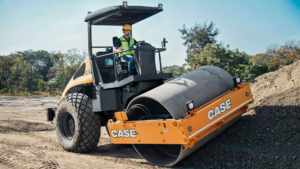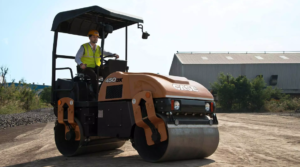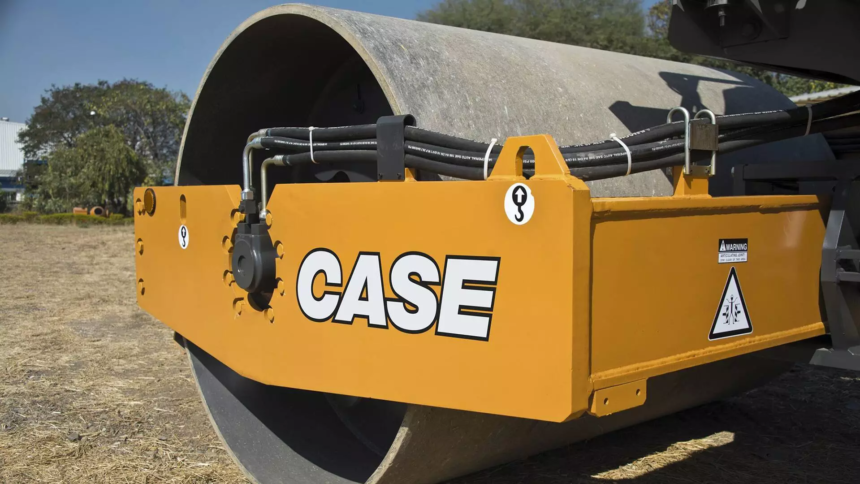The development of infrastructure, rising urbanization, and increased adoption of technology have all contributed to the construction sector’s growth. Nowadays, there is a huge demand for construction equipment that can carry out tasks with greater efficiency and dependability due to the rapid expansion of cities and the establishment of new building operations.
Single and double drum rollers are highly functional construction machinery crucial in meeting on-site demands. Significant advancements have been made in modern rollers’ design, including improved hydraulic systems, improved vibration control, and ergonomic rollers. These innovations are vital tools on today’s construction site, as they contribute more than just to the efficiency and accuracy of operations but also to overall safety, durability, and comfort.
Single Drum Rollers

Some construction equipment, called single drum rollers, features one large cylinder drum at the front of the machine and either smooth or padded rear wheels. Front drums are primarily used to hold and compact materials such as crushed stone, sand, and gravel, which are used to create a level and sturdy base for construction projects.
Single drum roller compactors are ideal for use in crowded areas and on small construction sites because of their many advantages, including their ease of mobility due to their compact sizes. Because of their design and working principles, they are perfect tools for road construction and maintenance and for setting up the foundation for construction projects. Moreover, a single drum roller is essential to achieving durable and excellent compaction.
Double Drum Rollers

Double drum rollers comprises two large cylindrical drums, one at the front and one at the back. This design makes the machine’s working width consistent during compacting, which makes it perfect for use on cohesive soils and concrete. The dual drum arrangement offers increased stability, traction, and safety to guarantee even compaction rather than uneven ones. Because these rollers are effective at covering large areas, they are frequently utilized in large-scale projects like building roads and parking lots. Thus, the controlled compaction that double drum rollers can provide makes it possible to prepare an ideal, durable surface throughout the task.
Difference Between Single Drum and Double Drum Rollers
Here is the table of differentiation on how single and double drum rollers stand out with unique specifications.
| Basis | Single Drum Roller | Double Drum Roller |
| Number of rollers | Equipped with one large steel drum at the front for compacting, while the rear is supported by standard rubber tires. | Equipped with two steel drums, one at the front and one at the back, both used for compacting surfaces simultaneously. |
| Load capacity | Has a higher load capacity due to its single large drum, making it ideal for compacting thicker layers of soil, gravel, and other materials. | Has a relatively lower load capacity as the weight is distributed between the two drums, making it more suitable for compacting thinner layers on finished surfaces. |
| Stability | Less stable, especially on uneven or sloped surfaces, due to its single drum design. It has a higher chance of tipping or losing balance, especially during turns or when moving across slopes. | More stable on flat surfaces and gentle slopes as the dual-drum design allows for even weight distribution, reducing the risk of tipping. |
| Friction and rolling resistance | Offers higher friction and rolling resistance because of its single drum, which is useful for compacting coarse or uneven materials and providing better traction on rough terrains. | Provides lower friction and rolling resistance since both drums are in constant contact with the surface. This makes it more efficient for compacting smooth surfaces’, even surfaces like concrete, but less effective on rough terrain. |
| Steering and maneuverability | Easier to steer and maneuver in tight spaces, such as narrow lanes or construction sites with limited working areas. It has a smaller turning radius due to the combination of one drum and rear tires. | Less maneuverable compared to single drum rollers due to the two-drum setup, which requires more space to turn. The larger turning radius makes it less ideal for compacting in confined or tight areas. |
Final Thoughts
Each type of drum roller compactor—single or double—has advantages, depending on the construction requirements. Road construction can benefit from single drum rollers’ relatively high operating capacity and compact enough to be used in tight spaces and on uneven terrain. Conversely, the double drum rollers produce smoother, even denser ground in larger areas due to their increased compactness and stability.
With CASE Constructions, one of the best construction equipment companies in India, you can leverage the best of both worlds and make them a go-to choice for staying ahead of the modern construction era.







